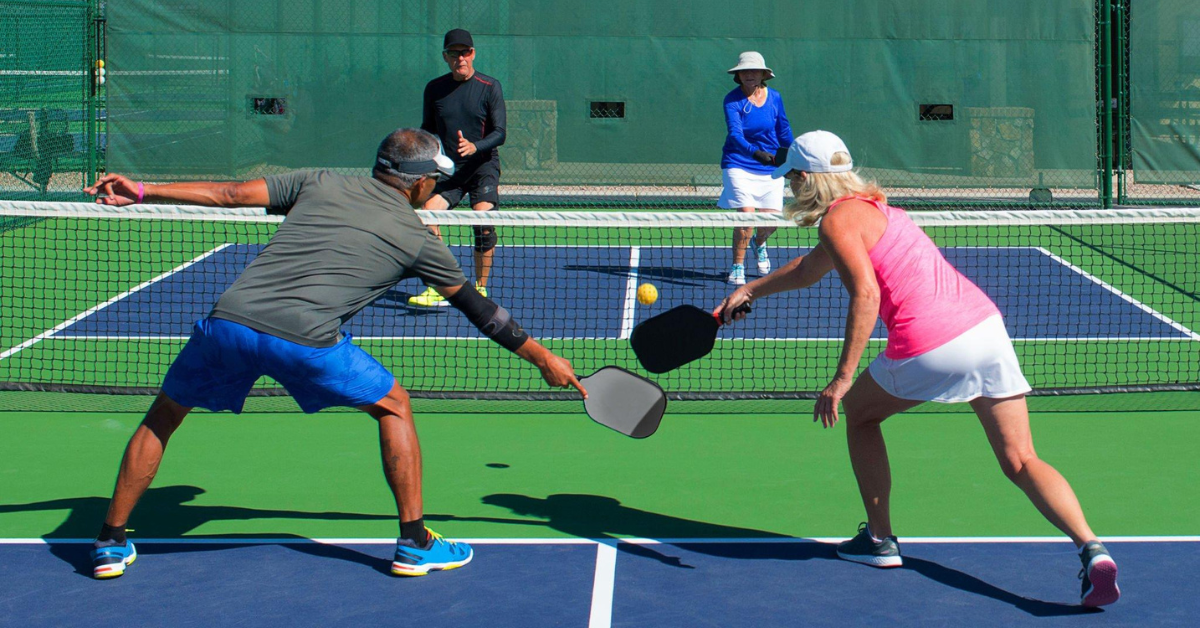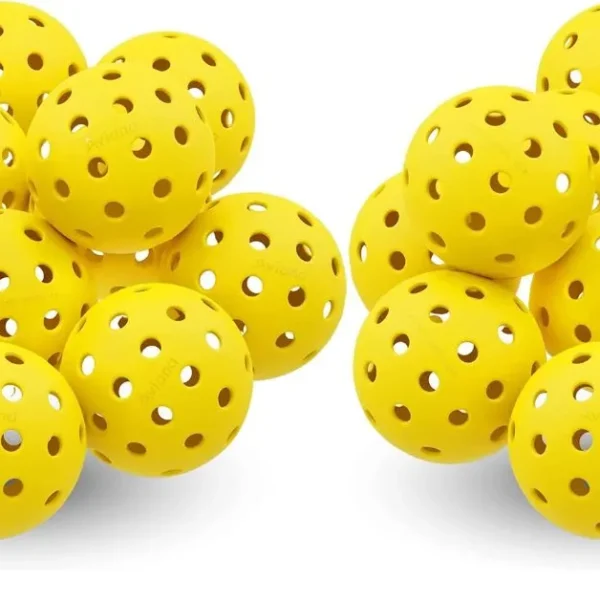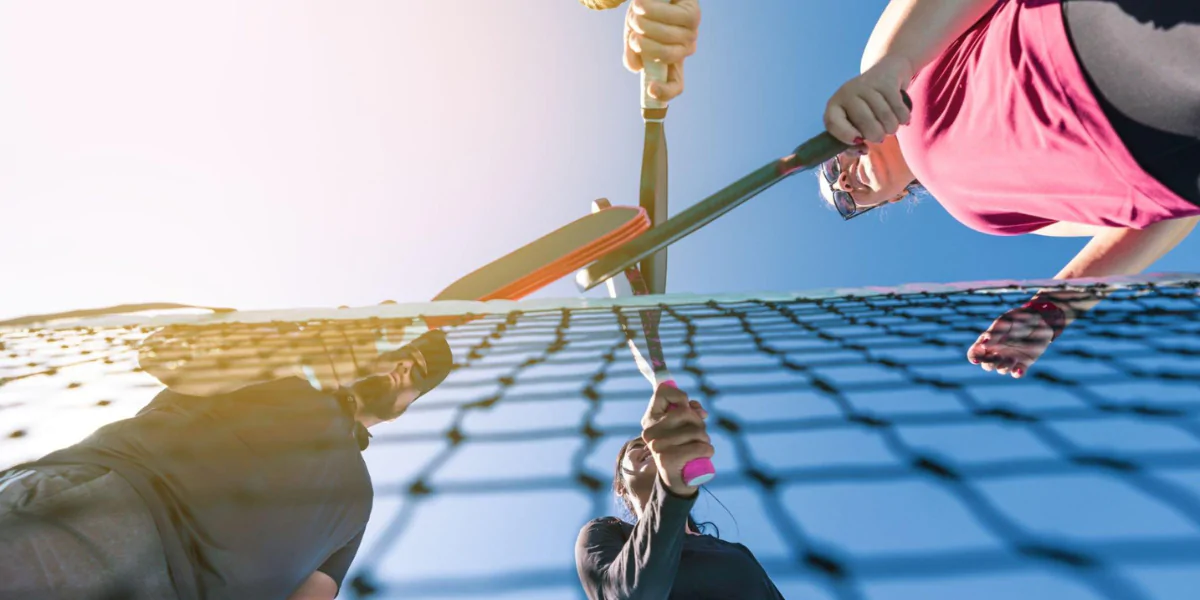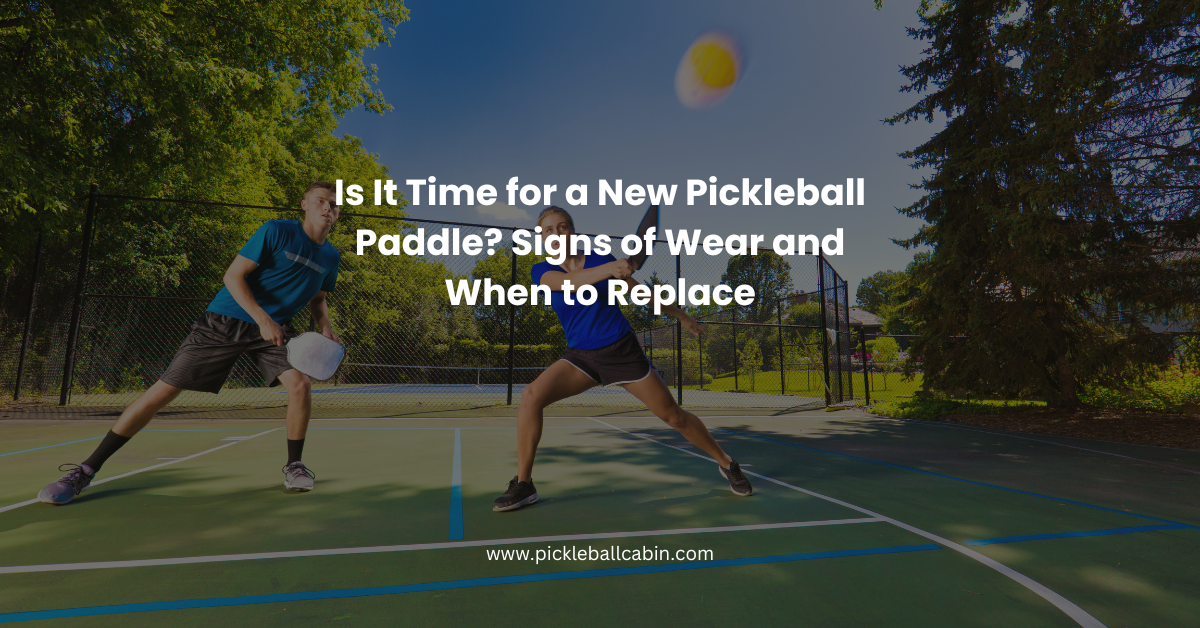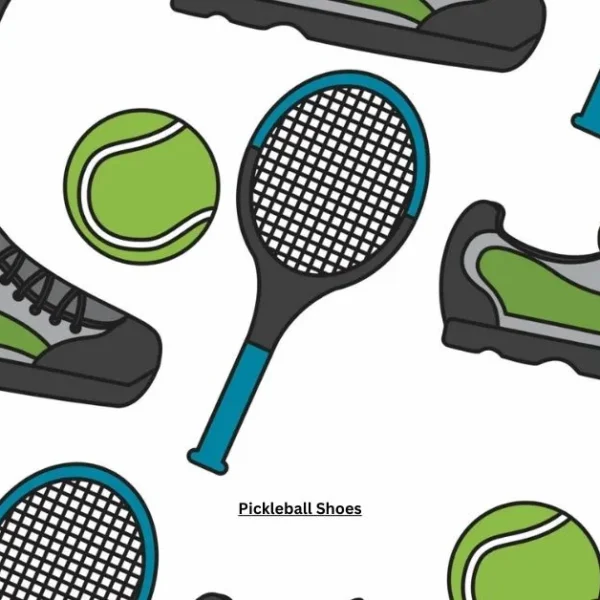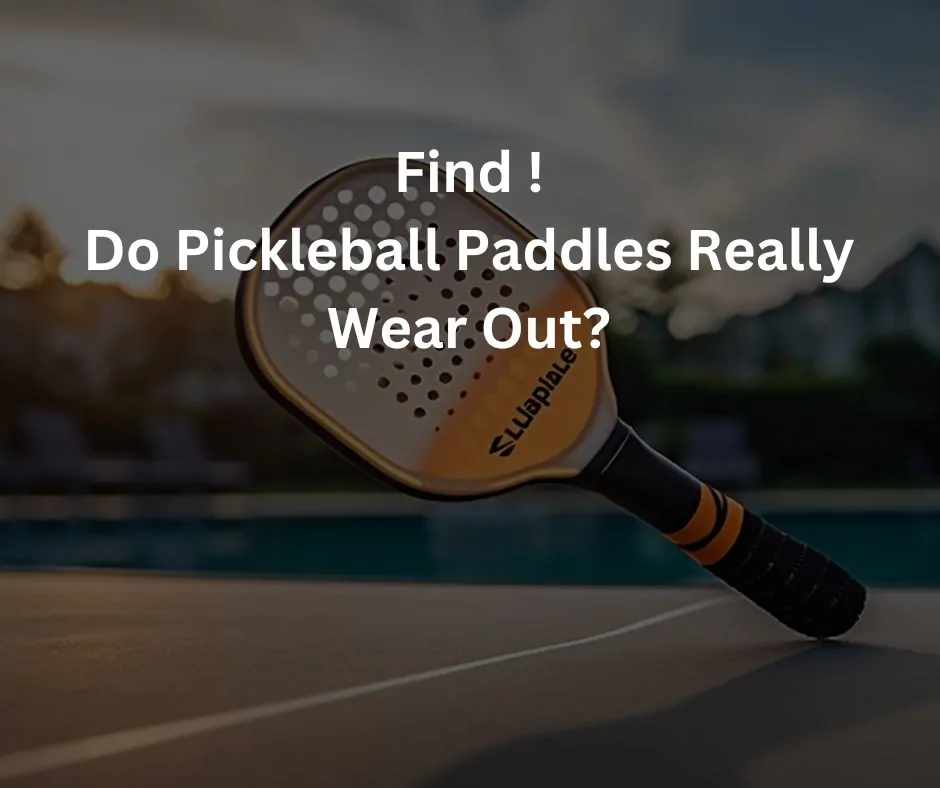Dominate the Court with High Level Pickleball Strategies
Pickleball is not only a great way to exercise and socialize, but also a game that requires skill, strategy, and tactics. Whether you are a beginner or an advanced player, you can always improve your game by learning and applying some High Level Pickleball Strategies and tips.
In this article, we will share with you 25 high level pickleball strategies and tips that will help you take your game to the next level. These strategies and tips cover various aspects of the game, such as serving, returning, hitting, positioning, movement, communication, and more. By following these strategies and tips, you will be able to play smarter, faster, and more effectively in pickleball.
Top Rated Pickleball Strategies and Tips
1. Consistently Serve Deep, to Backhands & in the Court
One of the most important skills in pickleball is serving. A good serve can set the tone for the rally and give you an advantage over your opponents. Here are some tips on how to serve well in pickleball:
- Serve deep: A deep serve will force your opponents to move back and hit the ball from a less favorable position. A deep serve will also give you more time to get to the net and prepare for the third shot.
- Serve to backhands: A backhand serve will make it harder for your opponents to return the ball with power and accuracy. A backhand serve will also limit their options for hitting angles and spins.
- Serve in the court: A serve that goes out of bounds or into the net is a wasted opportunity. A serve that goes in the court will put pressure on your opponents and force them to make a good return.
2. Return Deep, to Backhands & to the Opponent with a Weaker Third Shot
The return of serve is another crucial skill in pickleball. A good return can neutralize your opponent’s serve and put you in a better position for the rally. Here are some tips on how to return well in pickleball:
- Return deep: A deep return will have the same benefits as a deep serve. It will push your opponents back and make them hit the ball from a lower position. A deep return will also give you more time to get to the net and prepare for the fifth shot.
- Return to backhands: A backhand return will have the same benefits as a backhand serve. It will make it harder for your opponents to hit the third shot with power and accuracy. A backhand return will also limit their options for hitting angles and spins.
- Return to the opponent with a weaker third shot: A third shot is usually a drop shot or a drive that aims to get you to the net or keep your opponents at bay. If you can identify which opponent has a weaker third shot, you can target them with your return and make them hit a less effective third shot.
3. Hit Shots with Purpose
Every shot you hit in pickleball should have a purpose. You should not hit shots randomly or without thinking. You should have a clear intention of what you want to achieve with each shot. Here are some examples of hitting shots with purpose:
- Hit shots to set up the next shot: You should always think one or two steps ahead when hitting shots in pickleball. You should hit shots that will create opportunities for you or your partner to hit the next shot more easily or effectively.
- Hit shots to exploit your opponent’s weaknesses: You should always observe your opponent’s strengths and weaknesses when playing pickleball. You should hit shots that will expose their weaknesses or avoid their strengths.
- Hit shots to control the pace of the game: You should always be aware of the pace of the game when playing pickleball. You should hit shots that will either speed up or slow down the game depending on what suits you better.
4. Play to Your Strengths
One of the keys to success in pickleball is playing to your strengths. You should know what your best shots are and use them as often as possible. You should also know what your partner’s best shots are and complement them with yours. Here are some tips on how to play to your strengths:
- Identify your strengths: You should analyze your own game and figure out what your strengths are. For example, you may have a strong forehand, a reliable dink, or a powerful smash.
- Use your strengths: You should use your strengths whenever you have the chance. For example, if you have a strong forehand, you should try to hit most of your shots with your forehand. If you have a reliable dink, you should try to get into a dinking rally with your opponents.
- Avoid your weaknesses: You should also analyze your own game and figure out what your weaknesses are. For example, you may have a weak backhand, a poor lob, or a slow reaction. You should try to avoid hitting shots that will expose your weaknesses or put you in a disadvantageous position.
5. Keep Your Opponents Guessing
One of the ways to outsmart your opponents in pickleball is to keep them guessing. You should not be predictable or repetitive with your shots. You should vary your shots in terms of speed, spin, direction, and depth. Here are some tips on how to keep your opponents guessing:
- Mix up your serves: You should not serve the same way every time. You should mix up your serves by changing the speed, spin, direction, and depth of your serves. For example, you can serve fast or slow, with topspin or backspin, to the left or right, and deep or short.
- Mix up your returns: You should not return the same way every time. You should mix up your returns by changing the speed, spin, direction, and depth of your returns. For example, you can return fast or slow, with topspin or backspin, to the left or right, and deep or short.
- Mix up your shots: You should not hit the same shot every time. You should mix up your shots by changing the speed, spin, direction, and depth of your shots. For example, you can hit drop shots or drives, with topspin or backspin, crosscourt or down the line, and deep or short.
6. Use the Lob Effectively
The lob is a shot that sends the ball high over the net and lands near the baseline of your opponent’s court. The lob is a risky but useful shot that can catch your opponents off guard and create openings for you. Here are some tips on how to use the lob effectively:
- Use the lob sparingly: You should not use the lob too often or too predictably. You should use the lob as a surprise weapon or a last resort when you are in trouble. If you use the lob too much, your opponents will anticipate it and counter it easily.
- Use the lob when your opponents are at the net: The best time to use the lob is when your opponents are at the net and close to each other. This will make it harder for them to retreat and hit an overhead smash. If you lob when your opponents are at the baseline or far apart, they will have more time and space to hit a good return.
- Use the lob with accuracy: You should aim to hit the lob as high and deep as possible. This will give you more margin for error and make it harder for your opponents to reach and return the ball. If you hit the lob too low or short, your opponents will be able to smash it back at you.
7. Stay Calm Under Pressure
Pickleball is a game that can generate a lot of pressure and stress. You may face situations where you are behind in the score, facing a tough opponent, making mistakes, or dealing with distractions. In these situations, it is important to stay calm and composed. Here are some tips on how to stay calm under pressure:
- Breathe deeply: One of the simplest and most effective ways to calm yourself down is to breathe deeply. Breathing deeply will help you relax your muscles, lower your heart rate, and clear your mind.
- Focus on the present: One of the common causes of pressure and stress is worrying about the past or the future. You may dwell on your previous errors or fear what might happen next. To avoid this, you should focus on the present moment and what you can control right now.
- Have fun: One of the best ways to relieve pressure and stress is to have fun. You should remember that pickleball is a game that you play for enjoyment and recreation. You should not take it too seriously or let it affect your mood negatively.
8. Be Patient
Pickleball is a game that requires patience and perseverance. You may face situations where you are stuck in a long rally, facing a defensive opponent, or unable to finish a point. In these situations, it is important to be patient and wait for the right opportunity. Here are some tips on how to be patient:
- Don’t rush: One of the common mistakes in pickleball is rushing or forcing shots that are not there. You may try to hit winners too soon or too often without setting them up properly. This will result in errors or easy returns for your opponents.
- Don’t give up: Another common mistake in pickleball is giving up or losing hope when things are not going your way. You may get frustrated or discouraged by your opponent’s shots or tactics. This will affect your performance and attitude negatively.
- Don’t get bored: Another common mistake in pickleball is getting bored or losing interest when the game is too slow or repetitive. You may lose your concentration or motivation to play your best. This will affect your performance and attitude negatively.
To be patient, you should:
- Trust your game plan: You should have a clear game plan that suits your style and skills. You should stick to your game plan and execute it consistently. You should not change your game plan unless it is necessary or beneficial.
- Enjoy the process: You should enjoy the process of playing pickleball, not just the outcome. You should appreciate the challenge and the opportunity to improve your skills and strategies. You should not focus on the score or the result too much.
- Wait for the right moment: You should wait for the right moment to hit your shots or finish the point. You should look for signs of weakness or vulnerability in your opponents. You should not miss any chances to capitalize on their mistakes or openings.
9. Move Your Opponents Around the Court
One of the ways to gain an advantage over your opponents in pickleball is to move them around the court. You should not let them stay in their comfort zone or preferred position. You should make them move side to side, front and back, and diagonally. Here are some tips on how to move your opponents around the court:
- Use angles: You should use angles to create space and open up the court. You should hit shots that go crosscourt or down the line, depending on where your opponents are. You should also hit shots that go wide or sharp, depending on how far your opponents are from the net.
- Use depth: You should use depth to create distance and pressure. You should hit shots that go deep or short, depending on how close your opponents are to the net. You should also hit shots that go high or low, depending on how high your opponents are hitting the ball.
- Use speed: You should use speed to create tempo and momentum. You should hit shots that go fast or slow, depending on how fast your opponents are moving or reacting. You should also hit shots that go hard or soft, depending on how hard your opponents are hitting the ball.
10. Use Your Non-Dominant Hand
One of the ways to improve your skills and versatility in pickleball is to use your non-dominant hand. You should not rely on your dominant hand only for hitting shots in pickleball. You should be able to switch hands and hit shots with both hands equally well. Here are some tips on how to use your non-dominant hand:
- Practice with your non-dominant hand: The best way to improve your non-dominant hand is to practice with it regularly. You should practice hitting different shots with your non-dominant hand, such as serves, returns, drops, drives, dinks, lobs, smashes, and volleys.
- Use your non-dominant hand in games: The best way to test your non-dominant hand is to use it in games. You should use your non-dominant hand whenever you have the opportunity or need to do so. For example, you can use your non-dominant hand when you are out of position, when you have a weak backhand, when you want to surprise your opponents, or when you want to have fun.
- Use both hands interchangeably: The best way to master your non-dominant hand is to use both hands interchangeably. You should be able to switch hands seamlessly and hit shots with both hands without losing power, accuracy, or consistency.
11. Practice Your Dinks
One of the most important shots in pickleball is the dink. A dink is a soft shot that goes over the net and lands in the non-volley zone (also known as the kitchen) of your opponent’s court. The dink is a shot that can help you control the rally and set up offensive opportunities. Here are some tips on how to practice your dinks:
- Practice with a partner: The best way to practice your dinks is to practice with a partner who can dink with you. You should practice dinking from different positions, such as from the baseline, from the transition zone, or from the net. You should also practice dinking with different spins, such as topspin, backspin, or no spin.
- Practice with a wall: The next best way to practice your dinks is to practice with a wall that can bounce back your shots. You should practice hitting dinks against the wall from different distances and angles. You should also practice hitting dinks with different heights and speeds.
- Practice with a target: The final way to practice your dinks is to practice with a target that can mark where you want your shots to land. You should practice hitting dinks over a net or a rope that simulates the net. You should also practice hitting dinks into a box or a bucket that simulates the non-volley zone.
12. Use the Third Shot Drop Shot Effectively
One of the most challenging and useful shots in pickleball is the third shot drop shot. A third shot drop shot is a soft shot that goes over the net and lands in the non-volley zone of your opponent’s court. The third shot drop shot is a shot that can help you transition from the baseline to the net and neutralize your opponent’s serve or return. Here are some tips on how to use the third shot drop shot effectively:
- Use the third shot drop shot when you are ready: You should not use the third shot drop shot unless you are ready to do so. You should use the third shot drop shot when you have a good serve or return, when you have a good balance and stance, and when you have a clear vision and aim.
- Use the third shot drop shot with finesse: You should not use the third shot drop shot with force or haste. You should use the third shot drop shot with finesse and touch. You should hit the ball softly and gently, with a slight upward motion and a slight downward angle.
- Use the third shot drop shot with confidence: You should not use the third shot drop shot with doubt or fear. You should use the third shot drop shot with confidence and conviction. You should hit the ball firmly and confidently, with a smooth follow-through and a positive attitude.
13. Be Aggressive at the Right Time
One of the ways to win points and games in pickleball is to be aggressive at the right time. You should not be passive or defensive all the time in pickleball. You should be able to attack and finish points when you have the chance. Here are some tips on how to be aggressive at the right time:
- Be aggressive when you have an advantage: You should be aggressive when you have an advantage over your opponents, such as when you have a better position, a better angle, a better spin, or a better speed.
- Be aggressive when your opponents have a weakness: You should be aggressive when your opponents have a weakness, such as when they have a weak return, a weak backhand, a weak lob, or a weak reaction.
- Be aggressive when your opponents are not expecting it: You should be aggressive when your opponents are not expecting it, such as when they are off balance, off guard, off rhythm, or off focus.
14. Play Smart Defense
One of the ways to survive and thrive in pickleball is to play smart defense. You should not be easy or careless when you are on defense in pickleball. You should be able to defend and counter your opponent’s attacks and turn defense into offense. Here are some tips on how to play smart defense:
- Play smart defense by blocking: One of the ways to play smart defense is by blocking your opponent’s shots. Blocking is a technique that involves using your paddle to stop or redirect your opponent’s shots without swinging or hitting back. Blocking can help you absorb your opponent’s power and speed and keep the ball in play.
- Play smart defense by resetting: Another way to play smart defense is by resetting your opponent’s shots. Resetting is a technique that involves using your paddle to soften or slow down your opponent’s shots and send them back over the net with minimal pace or spin. Resetting can help you neutralize your opponent’s aggression and pressure and regain control of the rally.
- Play smart defense by countering: The final way to play smart defense is by countering your opponent’s shots. Countering is a technique that involves using your paddle to hit back your opponent’s shots with more power or spin than they came with. Countering can help you surprise your opponent and create offensive opportunities for yourself.
15. Use Your Feet to Get into Position Quickly
One of the keys to success in pickleball is using your feet to get into position quickly. You should not be lazy or slow with your feet in pickleball. You should be able to move fast and efficiently around the court and hit shots from optimal positions. Here are some tips on how to use your feet to get into position quickly:
- Use small steps: One of the ways to use your feet to get into position quickly is to use small steps instead of big strides. Small steps will help you adjust your position more precisely and smoothly. Small steps will also help you maintain your balance and stability.
- Use split steps: Another way to use your feet to get into position quickly is to use split steps before hitting shots. Split steps are quick hops that involve landing on both feet at the same time with knees slightly bent. Split steps will help you prepare for any direction or movement of the ball.
- Use cross steps when covering large distances or changing directions. Cross steps are steps that involve crossing one foot over or behind the other foot. Cross steps will help you cover more ground and change directions faster.
16. Keep Your Eye on the Ball
One of the keys to success in pickleball is keeping your eye on the ball. You should not lose sight of the ball or look away from it in pickleball. You should be able to track and anticipate the ball’s movement and hit shots with accuracy and consistency. Here are some tips on how to keep your eye on the ball:
- Keep your head still: One of the ways to keep your eye on the ball is to keep your head still when hitting shots. Keeping your head still will help you maintain your focus and balance. Keeping your head still will also help you avoid unnecessary movements that can affect your shot quality.
- Watch the ball until it hits your paddle: Another way to keep your eye on the ball is to watch the ball until it hits your paddle. Watching the ball until it hits your paddle will help you adjust your position and timing. Watching the ball until it hits your paddle will also help you hit the ball with more power and control.
- Watch the ball until it bounces on your opponent’s court: The final way to keep your eye on the ball is to watch the ball until it bounces on your opponent’s court. Watching the ball until it bounces on your opponent’s court will help you prepare for the next shot. Watching the ball until it bounces on your opponent’s court will also help you see where your shot landed and how your opponent reacted.
17. Communicate with Your Partner
One of the keys to success in pickleball is communicating with your partner. You should not play in silence or ignore your partner in pickleball. You should be able to talk and listen to your partner and work as a team. Here are some tips on how to communicate with your partner:
- Communicate before, during, and after each point: You should communicate with your partner before, during, and after each point. Before each point, you should discuss your game plan and strategy. During each point, you should call out shots and signals. After each point, you should give feedback and encouragement.
- Communicate clearly, loudly, and politely: You should communicate with your partner clearly, loudly, and politely. You should use simple and specific words or phrases that both of you understand. You should speak loud enough for your partner to hear, but not too loud for your opponents to hear. You should be respectful and courteous to your partner, even if you disagree or make mistakes.
- Communicate positively, constructively, and confidently: You should communicate with your partner positively, constructively, and confidently. You should avoid negative, destructive, or doubtful words or tones that can affect your partner’s mood or performance. You should focus on solutions, not problems; strengths, not weaknesses; opportunities, not obstacles.
18. Know When to Poach
One of the ways to win points and games in pickleball is to know when to poach. Poaching is a technique that involves moving from your side of the court to your partner’s side of the court and hitting a shot that would normally be theirs. Poaching is a risky but rewarding move that can surprise your opponents and create openings for you. Here are some tips on how to know when to poach:
- Poach when you have a better shot: You should poach when you have a better shot than your partner, such as when you have a stronger forehand, a better angle, or a better position.
- Poach when your partner has a weaker shot: You should poach when your partner has a weaker shot than you, such as when they have a weaker backhand, a worse angle, or a worse position.
- Poach when your opponents are not expecting it: You should poach when your opponents are not expecting it, such as when they are focused on your partner, when they are out of position, or when they are off balance.
19. Practice Your Overhead Smash
One of the most powerful and satisfying shots in pickleball is the overhead smash. An overhead smash is a shot that involves hitting the ball from above your head with a downward motion and a lot of force. An overhead smash is a shot that can end rallies and points quickly and decisively. Here are some tips on how to practice your overhead smash:
- Practice with a partner: The best way to practice your overhead smash is to practice with a partner who can lob or feed balls to you. You should practice smashing balls from different heights, distances, and angles. You should also practice smashing balls with different speeds, spins, and directions.
- Practice with a machine: The next best way to practice your overhead smash is to practice with a machine that can launch balls to you. You should practice smashing balls from different heights, distances, and angles. You should also practice smashing balls with different speeds, spins, and directions.
- Practice with a wall: The final way to practice your overhead smash is to practice with a wall that can bounce back your shots. You should practice hitting smashes against the wall from different heights, distances, and angles. You should also practice hitting smashes with different speeds, spins, and directions.
20. Use Spin to Your Advantage
One of the ways to enhance your skills and strategies in pickleball is to use spin to your advantage. Spin is a technique that involves hitting the ball with a sideways or upward motion that makes it rotate in the air. Spin can affect the trajectory, speed, bounce, and direction of the ball. Here are some tips on how to use spin to your advantage:
- Use topspin: Topspin is a spin that makes the ball rotate forward in the air. Topspin can make the ball dip faster, bounce higher, and travel farther. You can use topspin to hit shots that are harder to return or reach, such as drives, drops, or lobs.
- Use backspin: Backspin is a spin that makes the ball rotate backward in the air. Backspin can make the ball float slower, bounce lower, and travel shorter. You can use backspin to hit shots that are easier to control or place, such as dinks, volleys, or slices.
- Use sidespin: Sidespin is a spin that makes the ball rotate sideways in the air. Sidespin can make the ball curve left or right, bounce left or right, and travel left or right. You can use sidespin to hit shots that are more deceptive or unpredictable, such as serves, returns, or angles.
21. Keep a Positive Attitude
One of the keys to success in pickleball is keeping a positive attitude. You should not be negative or pessimistic in pickleball. You should be optimistic and hopeful in pickleball. Here are some tips on how to keep a positive attitude:
- Keep a positive attitude by being grateful: One of the ways to keep a positive attitude is by being grateful for the opportunity to play pickleball. You should appreciate the benefits of playing pickleball, such as having fun, staying healthy, meeting new people, and learning new skills.
- Keep a positive attitude by being realistic: Another way to keep a positive attitude is by being realistic about your expectations and goals. You should set realistic and achievable goals that suit your level and experience. You should also accept your limitations and mistakes and learn from them.
- Keep a positive attitude by being resilient: The final way to keep a positive attitude is by being resilient in the face of challenges and difficulties. You should not give up or quit when things get tough or frustrating. You should bounce back and try again with more determination and enthusiasm.
22. Stay Hydrated and Fueled Up
One of the keys to success in pickleball is staying hydrated and fueled up. You should not be dehydrated or hungry in pickleball. You should be well-hydrated and well-nourished in pickleball. Here are some tips on how to stay hydrated and fueled up:
- Stay hydrated by drinking water: One of the ways to stay hydrated is by drinking water before, during, and after playing pickleball. Water will help you replenish your fluids and electrolytes that you lose through sweating. Water will also help you prevent dehydration symptoms such as fatigue, headache, cramps, or dizziness.
- Stay fueled up by eating snacks: Another way to stay fueled up is by eating snacks before, during, and after playing pickleball. Snacks will help you provide your body with energy and nutrients that you need for playing pickleball. Snacks will also help you prevent hunger symptoms such as weakness, irritability, or nausea.
- Stay hydrated and fueled up by choosing healthy options: The final way to stay hydrated and fueled up is by choosing healthy options for your water and snacks. You should avoid drinking sugary or caffeinated drinks that can dehydrate you or make you jittery. You should also avoid eating junk food or processed food that can upset your stomach or make you sluggish.
23. Warm Up Before Playing Pickleball
One of the keys to success in pickleball is warming up before playing pickleball. You should not play pickleball cold or stiff. You should play pickleball warm and loose. Here are some tips on how to warm up before playing pickleball:
- Warm up by doing dynamic stretches: One of the ways to warm up is by doing dynamic stretches that involve moving your joints and muscles through their full range of motion. Dynamic stretches will help you increase your blood flow, oxygen delivery, flexibility, and mobility.
- Warm up by doing cardio exercises that involve raising your heart rate and breathing rate. Cardio exercises will help you improve your endurance, stamina, and coordination. Some examples of cardio exercises are jogging, skipping, jumping jacks, or burpees.
- Warm up by doing pickleball drills: The final way to warm up is by doing pickleball drills that involve practicing your skills and strategies. Pickleball drills will help you improve your accuracy, consistency, and confidence. Some examples of pickleball drills are serving, returning, dropping, driving, dinking, lobbing, smashing, or volleying.
24. Wear Proper Footwear and Clothing for Pickleball
One of the keys to success in pickleball is wearing proper footwear and clothing for pickleball. You should not wear inappropriate or uncomfortable footwear or clothing for pickleball. You should wear suitable and comfortable footwear and clothing for pickleball. Here are some tips on how to wear proper footwear and clothing for pickleball:
- Wear proper footwear: You should wear proper footwear that provides you with support, stability, cushioning, and traction. You should avoid wearing footwear that is too tight, too loose, too heavy, or too slippery. You should also avoid wearing footwear that is designed for other sports, such as running shoes or tennis shoes. You should opt for footwear that is designed for pickleball, such as court shoes or cross trainers.
- Wear proper clothing: You should wear proper clothing that allows you to move freely, breathe easily, and stay cool and dry. You should avoid wearing clothing that is too tight, too loose, too thick, or too hot. You should also avoid wearing clothing that is made of cotton or other materials that absorb sweat and cause chafing. You should opt for clothing that is made of synthetic or moisture-wicking fabrics that keep you comfortable and prevent irritation.
25. Have Fun!
The final and most important tip for playing pickleball is to have fun! Pickleball is a game that is meant to be enjoyed and celebrated. You should not let pickleball stress you out or make you unhappy. You should let pickleball bring you joy and satisfaction. Here are some tips on how to have fun playing pickleball:
- Have fun by playing with different people: One of the ways to have fun playing pickleball is by playing with different people who have different skill levels, styles, personalities, and backgrounds. Playing with different people will help you learn new things, make new friends, and experience new challenges.
- Have fun by playing in different places: Another way to have fun playing pickleball is by playing in different places that have different courts, environments, climates, and atmospheres. Playing in different places will help you explore new locations, appreciate different sceneries, and adapt to different conditions.
- Have fun by playing for different reasons: The final way to have fun playing pickleball is by playing for different reasons that motivate you and inspire you. Playing for different reasons will help you set goals, achieve rewards, and express yourself. Some examples of reasons to play pickleball are for health, fitness, competition, recreation, socialization, or relaxation.
Conclusion
Pickleball is a game that can be played by anyone, anywhere, anytime. It is a game that can be enjoyed by beginners and experts alike. It is a game that can be improved by learning and applying some High Level Pickleball Strategies and tips.
In this article, we have shared with you 25 High Level Pickleball Strategies and tips that will help you take your game to the next level. These strategies and tips cover various aspects of the game such as serving returning hitting positioning movement communication and more By following these strategies and tips you will be able to play smarter faster and more effectively in pickleball.
We hope you found this article helpful and informative. We encourage you to try these strategies and tips in your next game of pickleball. We also invite you to share your feedback comments questions or suggestions with us.

